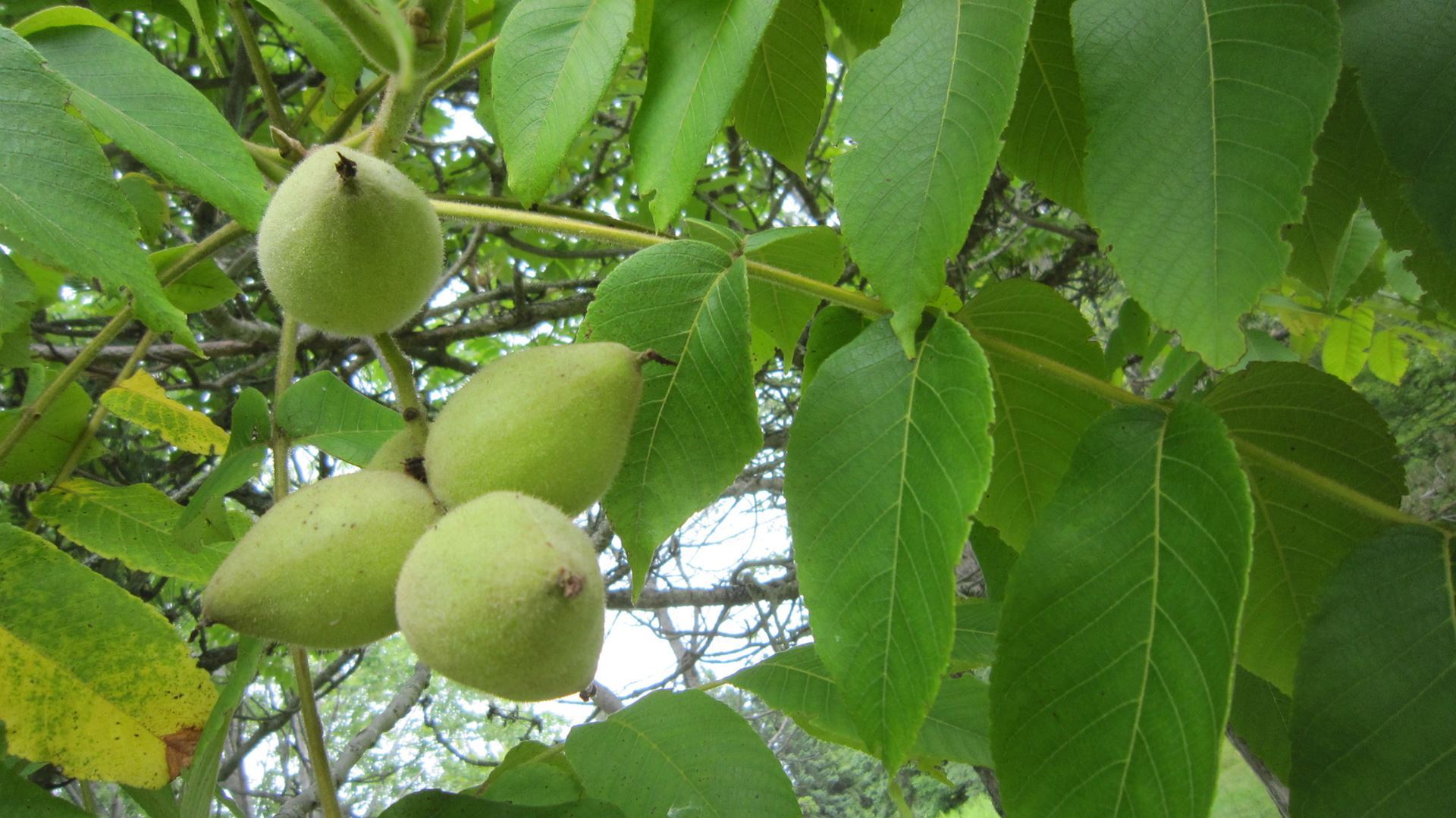.png)
Butternut (Juglans cinera)

© darlingtonpp CC BY-NC 4.0
What does it look like?
It belongs to the walnut family and produces edible nuts in the fall. Butternut is often mistaken for black walnut, but differs in its sticky, elongated fruits, sharply ridged nuts and mature pale gray bark compound leaves like black walnut, but with fewer leaflets on a hairy stalk and usually with the terminal leaflet of similar size as the rest. Butternut trees drop their leaves with the first few fall frosts. Butternuts are short-lived, to about 80 years of age.

ValerieZinger/Flickr/CC BY-SA 2.0
Where does it live?
It usually grows alone or in small groups in deciduous forests. It prefers moist, well-drained soil and is often found along streams. It can also be found well-drained soil and rarely on dry rocky soil. It does not do well in shade, you will often spot it in sunny openings and near forest edges.
What threatens it?
Butternut Canker is a fungal disease that spreads very quickly and can kill a tree within a few years. It has already made a significant negative impact on the populations. Surveys in eastern Ontario show that most trees are infected and potentially one-third of the trees have already been killed.
Where else has it been found?
The Butternut can be found throughout central and eastern North America. Specifically, in Canada it can be found in Ontario, Quebec, and New Brunswick. Additionally, can also be found throughout southwestern Ontario, north to the Bruce Peninsula, and south of the Canadian Shield.